*This post may have affiliate links, which means I may receive commissions if you choose to purchase through links I provide (at no extra cost to you). As an Amazon Associate, I earn from qualifying purchases. Please read my disclaimer for additional details.
Having black spots on your deck takes its appeal away. But besides that, the presence of black blemishes might be the start of something more serious such as rot.
If it is your first time seeing them, you might be wondering why your deck has black spots.
Why does your deck have black spots?
Decks can have black spots for one of many reasons. Of such reasons are mold and mildew growth, low-quality deck stains, cuts, scratches, and inappropriate cleaners.
Understandably, the black spots on your deck might leave you concerned. But the good news is there is an effective fix for most of the causes of black spots on decks.
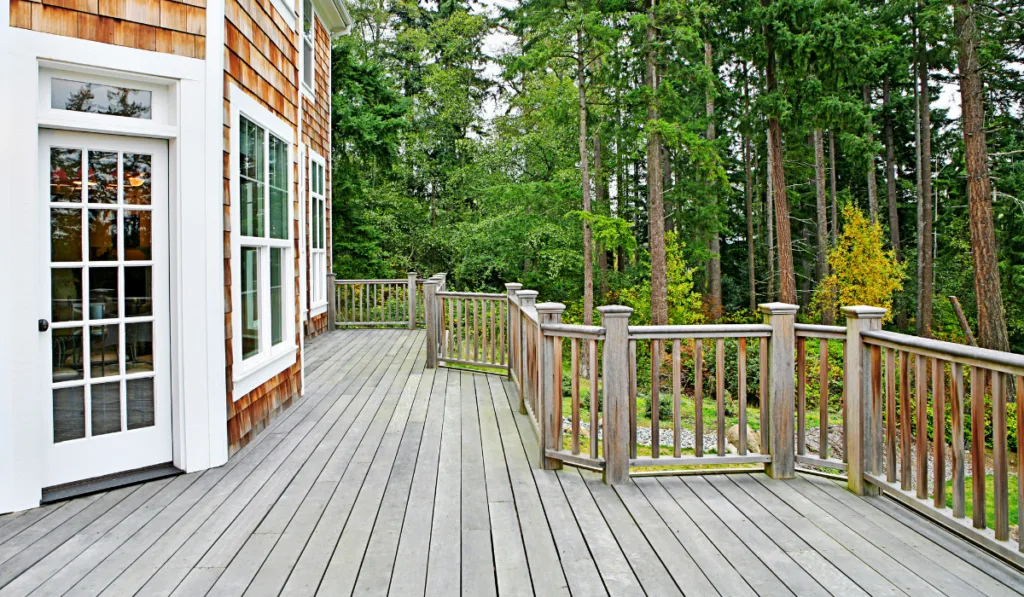
We’ll go over various reasons why decks have black spots in this article. For each cause, we talk about a corresponding fix. So, read on to find a solution to the black stains on your deck.
Table of Contents
Why Does Your Deck Have Black Spots?
In many cases, decks will maintain their original visual appeal for extended periods if maintained correctly. Unfortunately, even if you take care of your deck as you should, black spots may still show up.
The following are some reasons why your deck has black spots:

Mold and Mildew Growth
Mold and mildew growth is the most common reason for black spots on decks.
Ordinarily, if you stain your deck as you should, mildew and mold should not be able to grow on it. But, there are times when people do not clean the surface of their deck boards well enough before staining. In some cases, people do not clean the surface at all.
Unfortunately, if you do not clean the surface of your deck board before staining, the chances of having mildew and mold growth on your deck are very high.
In the absence of thorough cleaning, you will leave contaminants and moisture on the surface of your decking. So, when you stain the wood, you will lock in the contaminants and moisture, allowing mildew and mold to grow readily under the stain layer.
As mildew and mold start growing beneath the stain layer, they will discolor the deck boards. In many cases, this discoloration appears black.
If mold and mildew growth on your deck is left untreated, it may lead to rot. Of course, if your deck rots, you will have to replace it. Obviously, doing that will cost you a lot of money.
How to Fix
You could try removing the mold and mildew from your deck using a mold/mildew remover. However, if you are trying this method, you may have to scrub the affected areas repeatedly for the best results.
In place of a mold/mildew remover, you may use baking soda, trisodium phosphate, white vinegar, or detergent. You may even use diluted bleach.
If that does not work, try these steps:
- Remove the deck stain. You can do this using a deck cleaner or deck stain stripper.
- Cleanse the deck boards thoroughly using baking soda, trisodium phosphate, white vinegar, detergent, or well-diluted bleach. You may also need to clean the boards by pressure washing.
- Repeat the cleaning process if you have to.
- After washing the wood, let it dry. Then when dry, apply fungicide to kill the molds and mildew and prevent future growth.
- When the fungicide has completed its job, let the wood dry.
- When the deck boards are dry, apply a new deck stain.
Note that if using bleach or white vinegar to clean your deck boards, you must dilute them. For bleach, ½ cup in 3 gallons of water should do. For white vinegar, a 1:3 dilution of vinegar to water should do.
If you opt for pressure washing, do not exceed 600 psi if your decking is softwood. If your deck is hardwood, you could use slightly higher pressures but not too high.
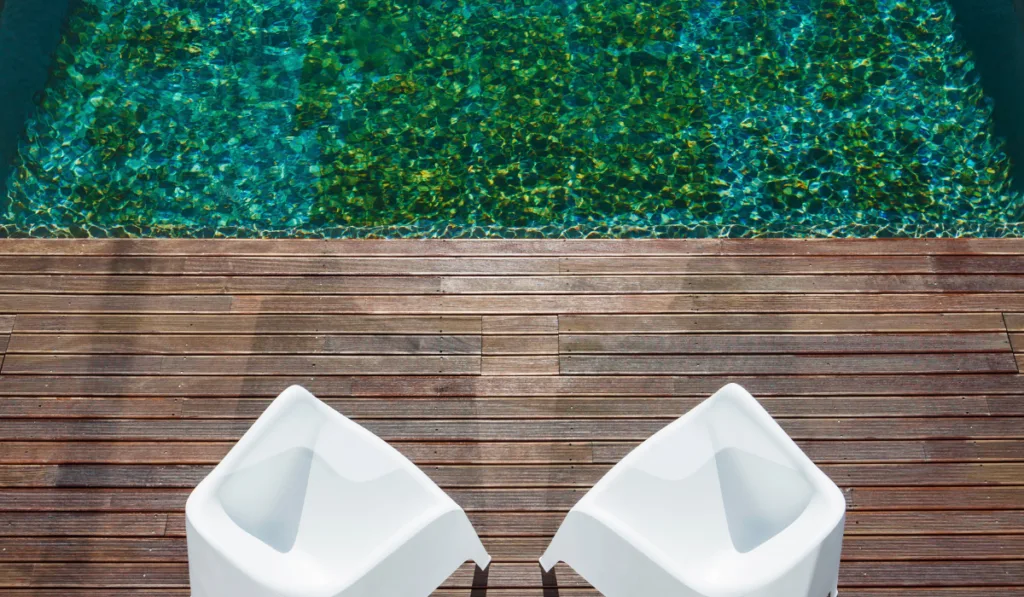
Low-Quality Stains
If you stain your deck with a substandard deck stain, you will most likely end up with black spots on your deck.
The black spots that appear on decks because of low-quality stain come from mold and mildew growth. Low-quality deck stains are typically devoid of protection against mold and mildew. They have no mildew and mold growth inhibitor or fungicide. So, mildew and mold can grow on the decks you apply them on.
How to Fix
To fix this, you have to remove the low-quality wood stain first. You can do this using a deck stain stripper.
After removing the deck stain, clean the deck boards to remove the black spots, then apply fungicide to kill the mold and mildew.
When the surfaces of the deck boards are dry and clean, apply a new deck stain. Of course, this time, use standard deck stain.

Cuts and Scratches
In some cases, the black spots on your deck come from cuts and scratches that run deep into the wood. If someone or something makes a deep cut or scratch on your deck, they will most likely slice through the stain layer.
Unfortunately, by slicing through the stain layer, the scratch or cut exposes that part of the wood to mold and mildew. Then when mold and mildew find their way into the exposed wood, they will grow and create black discoloration.
When black spots on decks come from cuts and scratches, they typically appear where the incisions are. In other words, black blemishes in cuts do not usually spread.
How to Fix
To fix black spots caused by cuts and scratches, start by removing the mold and mildew growth. Any of the methods we described above should help with this.
After treating the mildew and mold growth, you must even out the scratched or cut surface. To do this, get a deck repair kit with fillers and wax.
Applying the wax and fillers to the cuts or scratches will shut out mold and mildew. Obviously, they cannot grow and discolor your deck anymore when you shut them out.
Inappropriate Cleaning Tools
If you use harsh cleaning tools on your deck, you may just scratch or cut through the deck stain.
As explained above, cutting or scratching the deck stain exposes the deck board to mold and mildew. Mold and mildew, in turn, will cause black spots on your deck as they grow.
To avoid this, only clean your deck with the tools recommended by the materials manufacturers.
How to Fix
Fixing the cuts and scratches caused by abrasive tools can be as simple as using the fixes described above. But before you do, ensure the deck hasn’t suffered extensive damage.
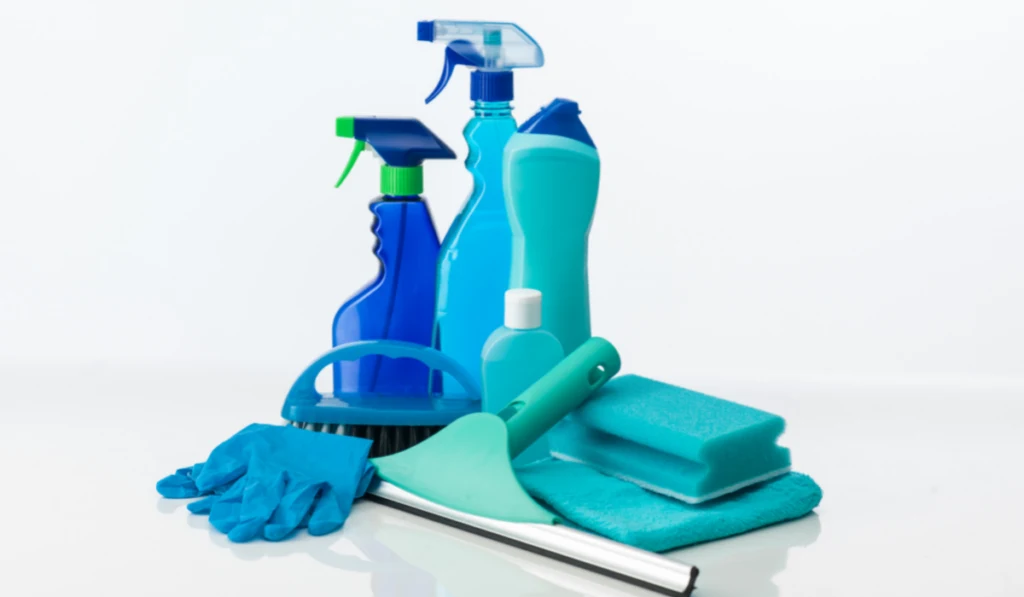
Inappropriate Cleaning Agents
If you clean decking with harsh cleaning agents, your deck might develop black spots. Generally, when cleaning your deck, avoid using undiluted bleach, pool chemicals, and cleaning chemicals containing chlorine and lye.
If you use any cleaning agents mentioned above, you risk discoloring your deck. Beyond discoloration, those chemicals might destroy your deck boards.
In some cases, people use bleach to remove mold and mildew from their decks. Ensure you dilute the bleach thoroughly if you intend to do the same. If not, you may destroy your deck.
How to Fix
You could try washing off discoloration caused by harsh chemical agents with white vinegar or a detergent. But then, they may not do much.
If washing the discoloration with mild cleaning agents does not do the job, your best bet is to conceal it. You can get a deck stain that comes in the color of your deck (or something close) and apply it to the spots.
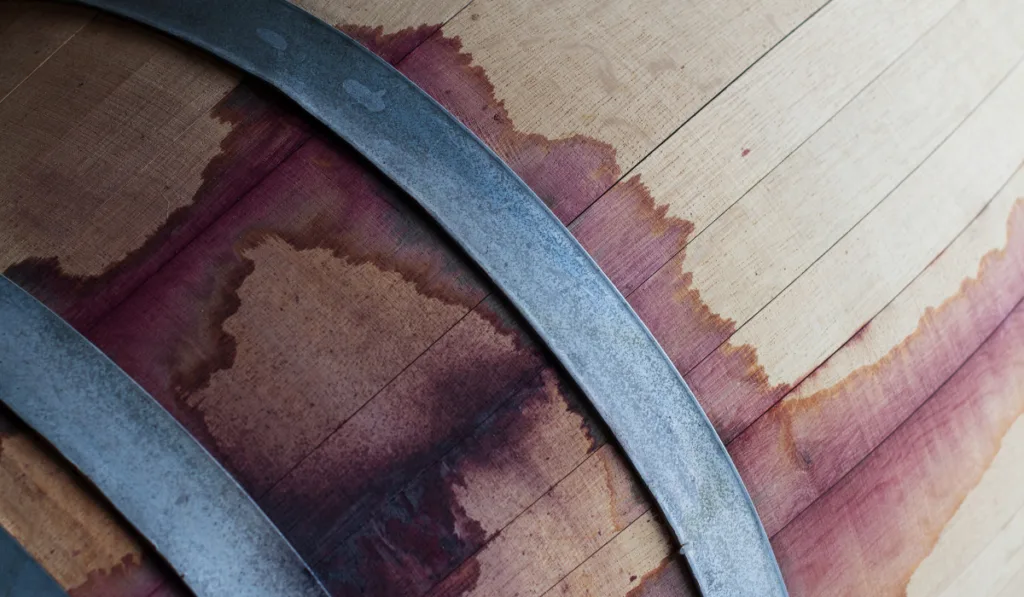
Tannins
Your deck may also get a black discoloration because of tannins.
Tannins are a group of substances that occur naturally in plants. They play various protective roles, including protecting against diseases, pests, and UV radiation. Since wood comes from plants, it also contains tannins.
The likelihood of deck discoloration by tannin depends on various factors. For instance, if your deck is wood with a high tannin concentration (such as oak, mahogany, or cherry), it is more likely to get black spots.
Besides that, if you use a water-based stain for your deck, the stain may pull water-soluble tannins upwards. Of course, as the tannins get closer to the surface, it is easier to see the discoloration they cause.
Also, if your deck comes in contact with water or metals, its tannins may turn black, gray, or blue. Of course, when this happens, it will manifest as blemishes.
How to Prevent
Before dealing with how to remove tannin discoloration in your deck, we’ll talk about how to prevent it. One way to do this is to use an oil-based stain.
Oil-based stains offer deeper protection than water-based stains. They are less likely to cause tannin discoloration and are easier to apply.
Another way to prevent tannin discoloration is to use a tannin-blocking sealer. Tannin-blocking sealers are pretty helpful if you are using water-based stains. They prevent any reaction between tannins and water, thereby averting discoloration.
By ensuring that the deck stain finish is even, you can prevent tannin discoloration. An uneven finish might promote water puddling. Of course, you can imagine what that could do to the tannins in your deck boards.
Apart from all we have said, you can prevent tannin discoloration by cleaning the deck boards thoroughly before staining.
Before applying stain to your deck, remove anything that can react with tannins to cause discoloration. Vacuum the dust, dry the surface very well, and ensure you leave no contaminants.
How to Fix
You can remove tannin discoloration by sanding the wood twice and then following the prevention steps outlined above.
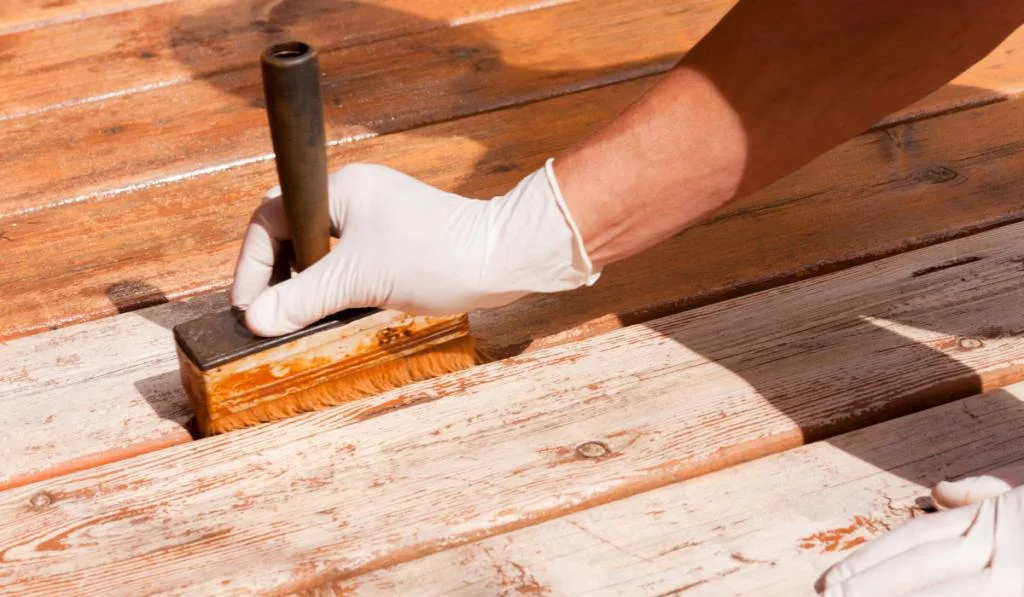
Superficial Stains
The black spots on your deck may be superficial; they may be caused by dyes, paints, inks, and other similar substances.
If this is the case, removing the stain is pretty easy.
How to Fix
Removing superficial stains on your deck can be as simple as scrubbing the stained spot with mild cleaning agents and water. You could use a detergent or soap for this purpose. It all depends on what works for you.
Resources
- https://www.deckstainhelp.com/my-deck-stain-turned-black/
- https://www.edmchicago.com/remove-black-spots-from-composite-decking/
- https://thebackyardpros.com/how-to-remove-black-stains-from-your-wood-deck
- https://www.basiccoatings.com/about/blog/blog/2021/02/18/3-tactics-to-prevent-tannic-acid-discoloration
